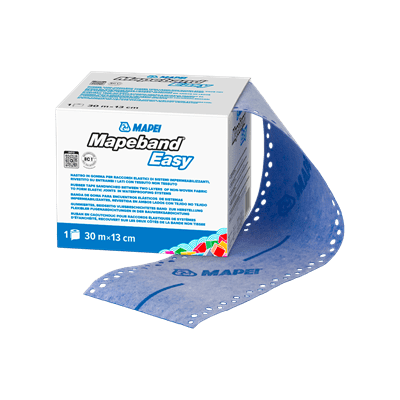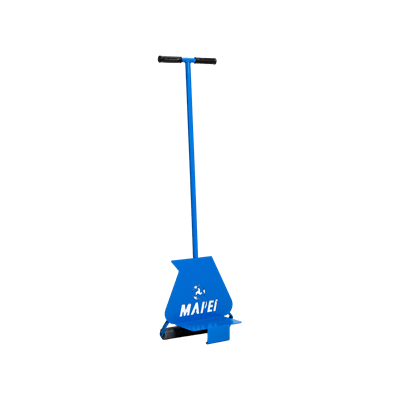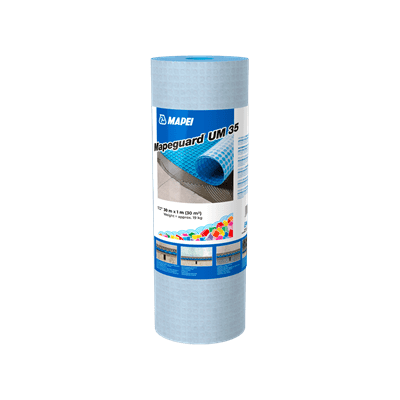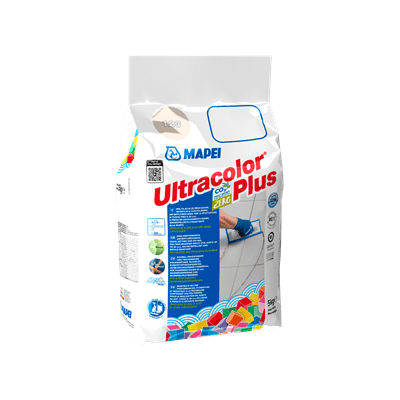

Projects
/
7/18/2025
Enegreen’s new headquarters: a model of innovation and sustainability
The new building was designed for energy efficiency, durability and environmental responsibility
The new Enegreen headquarters in Codogno (Northern Italy) is a virtuous example of sustainable building. Designed with energy efficiency and durability in mind, it incorporates innovative solutions to ensure comfort and safety. The interior and exterior floors were made using high-performance materials, such as large-format ceramic tiles installed with Mapei products. Special attention was paid to waterproofing and safe installation. The result is a modern, functional space in harmony with the environment.
Founded in 2005 by the Lomi family, Enegreen has recently established itself as a leader in the Italian building industry, distinguishing itself for the design and implementation of innovative solutions aimed at reducing energy consumption, improving living comfort and enhancing the structural and seismic safety of buildings. In its new role as a general contractor, the company has carried out over 2,200 projects on single-family homes and completed 538 apartment buildings in the last few years. These impressive results prompted the company to extend its headquarters in Codogno, near Milan (Italy), over the period from 2023 to 2024.

The Enegreen headquarters near Milan were recently extended by using Mapei products for the installation of ceramic tiles.
Goal: to create a sustainable headquarters
The new headquarters extends over two floors. The ground floor houses the technical offices and the customer service, purchasing and sales departments, while the upper floor is occupied by the management offices. Standing opposite this main building is a conference room inaugurated in November 2024. In keeping with its focus on a sustainable future, the company asked the architect and contractor to choose sustainable materials with low impact on the environments when building the headquarters.
Mapei was involved in the installation of outdoor paving (2,600 m²) around the new Enegreen office building and in the square separating this building from the warehouse and the innovative conference hall. The surface was paved with large-format (60x120 cm) thin (9 mm thick) porcelain tiles. Mapei products were also used in the interiors for the installation of large-format ceramic tiles in the bathrooms.

The ceramic tiles in the service areas were laid using Keraflex Maxi S1 Zero*, a cementitious adhesive with very low emissions of volatile organic compounds.
Perfectly installed outdoor paving
To ensure a high-quality, long-lasting result, it was important to prepare the substrate carefully and observe the correct curing times before proceeding to tile installation. In particular, use of the Mapeguard UM 35 membrane system was recommended following application of the screed due to the large size of the tiles and the need to ensure proper waterproofing.
This membrane is made from a layer of honeycomb HDPE (high-density polyethylene) with a rough surface and polypropylene fabric backing. It works as a waterproofing, uncoupling and anti-fracture barrier for cracked, damp or incompletely cured substrates prior to the installation of ceramic tiles and stone in both indoor and outdoor spaces. The system is also suitable for use in areas subject to heavy loads, as in this specific case. Before installing the ceramic covering, a waterproofing layer was created by using Mapeguard UM 35.
All joints between the sheets of the membrane and between the membrane and perimeter walls or columns were sealed using Mapeband Easy rubber tape bonded with Mapeguard WP Adhesive. The sheets were then pressed using Mapeguard Roller to ensure complete wetting of the rear of the membrane, after which ceramic tile installation began.

Before bonding the outdoor paving, a waterproofing layer was created using the Mapeguard UM 35 uncoupling membrane.
Large-format tiles require careful installation
In accordance with Italian standard UNI 11493-1, ceramic tiles must be installed using adhesives appropriate for the tile type and size, substrate characteristics, intended use, environmental conditions during installation and the time available before the surface is to be put into service. Given that this project would involve the use of large-format tiles for both the outdoor paving and the bathrooms, it was recommended to use an improved cementitious adhesive (C2 class according to EN 12004 standard) and deformable (S1 class according to EN 12004). As the client had specifically asked for high-quality, sustainable products, the Mapei Technical Services team recommended Keraflex Maxi S1 Zero* for both indoor and outdoor use. A high-performance deformable cementitious adhesive with extended open time, Low Dust technology and no vertical slip, this product has very low emissions of volatile organic compounds (VOC) and fully offset Greenhouse Gas emissions*.
Given the tile size and intended use, installation was carried out using the back-buttering technique, where adhesive is applied to both the substrate and the back of the tile to prevent the formation of voids.
MapeLevel ProWDG System levelling system was used between tiles to ensure correct joint widths and avoid lippage.
The 5 mm thick joints were grouted with Ultracolor Plus*, a high-performance, fast setting and drying grout with water-repellentDropEffect and BioBlock anti-mould technology.

Keraflex Maxi S1 Zero* was used for bonding large-format ceramic tiles while MapeLevel ProWDG System ensured the correct joint width.
In the outdoor area, the Mapeguard UM 35 membrane did not require expansion joints, but the ceramic covering surface had to be divided into square or rectangular grids and the joints sealed with Mapesil Tile Matt silicone sealant of the same colour as the cementitious grout.
To protect the system and ensure a high-quality aesthetic finish, Protec CPNV profiles from Profilpas were installed along the edges of the paved area during the adhesive application phase.
To ensure effective waterproofing between the edge profile and the second waterproofing layer (consisting of Mapeguard UM 35), Mapeband Easy tape was installed between the two layers and bonded with Mapeguard WP Adhesive.
When it comes to long-term performance, attention to detail is what really makes a difference.

To ensure effective waterproofing in the outdoor area, Mapeband Easy tape was applied between the Mapeguard UM 35 membrane and the Profilpas profiles using Mapeguard WP Adhesive.
Project information
New Enegreen headquarters, Codogno (Province of Lodi, Italy)
Period of construction: 2023-2024
Year of intervention: 2024
Design: Paola Orlandi
Owner: Enegreen SpA
Works director: Marco Rossi
Contractor: Enegreen Srl
Tile installation company: Coppola Pavimenti Srl
Mapei distributor: F.lli Malta Srl
Mapei coordinators: Silvana Carassiti and Osvaldo Medaglia, Mapei SpA
CO2 emissions measured throughout the life cycle of products from the Zero line in 2025 using Life Cycle Assessment (LCA) methodology, verified and certified with EPDs, have been offset through the acquisition of certified carbon credits in support of forestry protection projects. A commitment to the planet, to people and to biodiversity. For more details on how emissions are calculated and on climate mitigation projects financed through certified carbon credits, click here.















